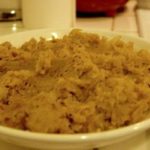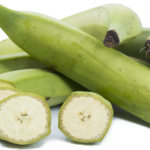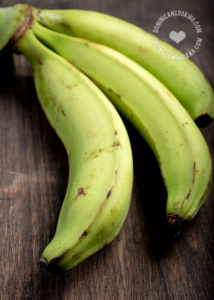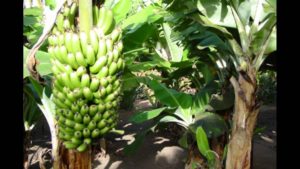 THE PLANTAIN-BANANA AND FROM WHERE THE NAME OF ITS TYPICAL FOOD “FU-FÚ”.
THE PLANTAIN-BANANA AND FROM WHERE THE NAME OF ITS TYPICAL FOOD “FU-FÚ”.
The Spanish colonizers introduced the banana in Cuba, which later became part of the food of the African slaves.
The banana, originally from Southeast Asia, is grown in more than a hundred countries and is the most consumed intertropical vegetable in the world. India is the main world producer and Ecuador the most important exporter. It grows in clusters of up to 100 units and 50 kilograms of weight and is much richer in calories than most of the fruits because of its high starch content.
Sometimes a difference is drawn between the bananas as fruit and the plantain banana, which must be roasted, fried or boiled before its intake. In Cuba, typical cuisine includes it among its most popular dishes. The fufú is one of them and its way of preparation consists of the mixture of crushed green plantain banana, mixed with pork and a sauce made with garlic, salt, lemon juice and oil. But why do Cubans call it fufu? What is the origin of the word?
According to Don Fernando Ortiz, the great investigator of Cuban folklore, during the British domination in Cuba, after the capture of Havana, many slaves entered by the invaders.
The food normally given to the slaves was boiled and crushed plantain banana and it is believed that this form of eating came from Ghana and Sierra Leone. The English slave traders used to say “food, food, food”!), When they distributed the rations to the slaves; hence, they began to give it the name of “fu-f’u”.
This dish is known as machuquillo and matajibaro in some places in the eastern Cuban region, mofongo in Puerto Rico; and mangu in the Dominican Republic.
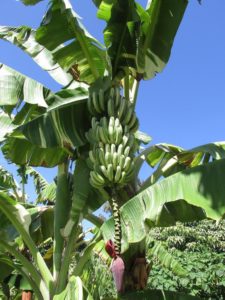 EL PLÁTANO Y DE DONDE PROVIENE EL NOMBRE DE SU COMIDA TÍPICA “FÚ – FÚ”
EL PLÁTANO Y DE DONDE PROVIENE EL NOMBRE DE SU COMIDA TÍPICA “FÚ – FÚ”
Los colonizadores españoles introdujeron en Cuba el plátano, que más tarde formó parte de la comida de los esclavos africanos.
El plátano,originario del sudeste asiático, se cultiva en más de un centenar de países y es el vegetal intertropical más consumido del mundo. La India es el principal productor mundial y Ecuador el más importante exportador. Crece en racimos de hasta 100 unidades y 50 kilogramos de peso y es mucho más rico en calorías que la mayor parte de los frutos por su alto contenido en fécula.
A veces se traza una diferencia entre las bananas cosumidos como fruta y el plátano vianda, que debe asarse, freírse o hervirse antes de su ingesta . En Cuba la cocina típica lo incluye entre sus platos más populares. El fufú es uno de ellos y su modo de preparación consiste en la mezcla de plátano verde machacado, entreverado de cerdo y un sofrito a base de ajo, sal, jugo de limón y acéite. Pero por qué los cubanos lo llamamos fufú? Cuál es el origen de la palabra?
Según Don Fernando Ortiz, el gran investigador del folclore cubano, durante la dominación inglesa en Cuba, después de la toma de La Habana, entraron muchos esclavos llevados por los invasores.
La comida que normalmente se daba a los esclavos era plátano hervido y machacado y se cree que esta forma de comerlo venía de Ghana y Sierra Leona. Los negreros ingleses acostumbraban a decir “food, food, food” (comida, comida, comida!), cuando repartían las raciones a los esclavos; de ahí que éstos comenzaran a darle el nombre de “fu-f’ú”.
Este plato se conoce como machuquillo y matajibaro en algunos lugares de la región oriental cubana, mofongo en Puerto Rico ; y mangu en República Dominicana.
Agencies/Arrajatabla/ Alberto Denis/ Internet Photos/ Arnoldo Varona/ TheCubanHistory.com
THE CUBAN HISTORY, HOLLYWOOD.



